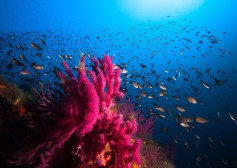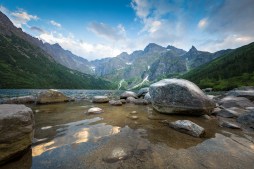Transformative Tales: How Wildlife Preserves Are Reviving Endangered Species
Wildlife preserves play a crucial role in the conservation of endangered species around the globe. These protected areas offer a safe haven for wildlife, allowing them to thrive, reproduce, and recover from the brink of extinction. In this article, we will explore transformative tales of wildlife preserves that have successfully revived endangered species and examine the strategies behind their success.
The Role of Wildlife Preserves in Conservation
Wildlife preserves serve as critical sanctuaries for threatened and endangered species. By providing an environment free from human interference and habitat destruction, these areas enable wildlife populations to stabilize and grow. Conservationists often utilize scientific research to monitor these populations closely, ensuring that effective management practices are being implemented to facilitate recovery.

Success Story: The American Bison
One of the most iconic success stories is that of the American bison. Once on the verge of extinction due to overhunting and habitat loss, dedicated efforts at wildlife preserves such as Yellowstone National Park have helped restore bison populations dramatically. Today, thousands roam freely in protected areas across North America thanks to strategic breeding programs and legal protections.
Success Story: The California Condor
Another remarkable example is the California condor. With only 27 individuals left in the 1980s, this magnificent bird was brought into captivity for a breeding program at various wildlife preserves like San Diego Zoo Global’s facilities. Thanks to extensive efforts involving captive breeding and subsequent release into natural habitats, today there are over 500 California condors in existence—though they still require ongoing conservation support.
Success Story: The Amur Leopard
The Amur leopard offers another inspiring tale of recovery through wildlife preservation efforts. Native to forests in southeastern Russia and northeastern China, this critically endangered cat has seen its population increase due to protection measures initiated within Russia’s Land of the Leopard National Park. Through habitat restoration initiatives and anti-poaching enforcement strategies, conservationists have managed to double their numbers over recent years.
Collaborative Efforts Yield Results
These success stories illustrate how collaborative efforts between governments, non-profit organizations, researchers, and local communities can lead to significant ecological restoration outcomes. By prioritizing education about biodiversity importance alongside strategic preservation initiatives—such collaborations can create lasting impacts not only on specific species but also on entire ecosystems.
As we reflect on these transformative tales from various wildlife preserves around the world, it becomes evident that protecting our planet’s biodiversity is achievable through commitment and collaboration across all sectors. Continued investment into these vital spaces will be instrumental in reversing declines among other endangered species while ensuring future generations inherit a thriving natural world.
This text was generated using a large language model, and select text has been reviewed and moderated for purposes such as readability.


